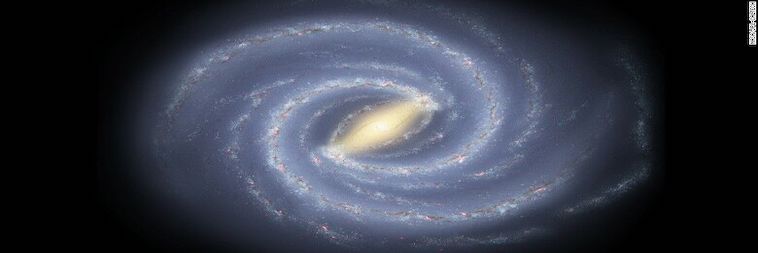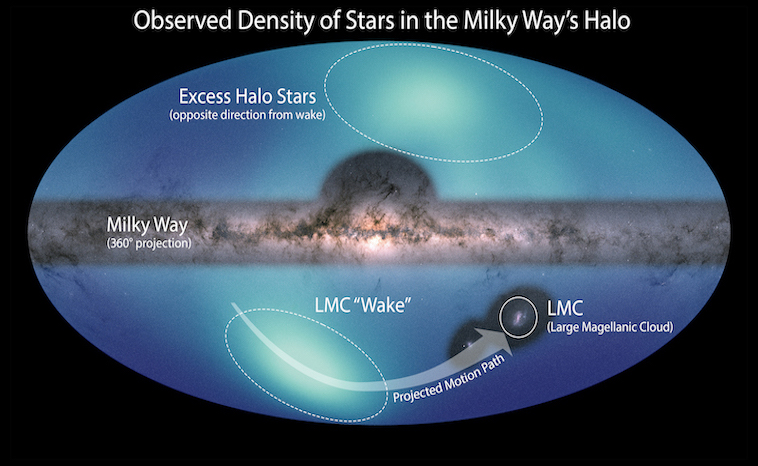Large Magellanic Cloud Wake Reveals Dark Matter
 NASA/JPL-Caltech/ESO/R. Hurt, Public domain, via Wikimedia Commons
NASA/JPL-Caltech/ESO/R. Hurt, Public domain, via Wikimedia Commons
A dwarf galaxy’s movement has revealed more evidence for dark matter in our universe. Read on to learn more about this new discovery.
A small neighboring galaxy, known as the Large Magellanic Cloud (LMC), orbits the Milky Way. Scientists created a new map showing that the Large Magellanic Cloud has cut through the Milky Way’s outer halo. This disturbance has left a rippling wave of stars behind the Large Magellanic Cloud. These stars reside in the halo. The LMC is a fairly small galaxy but very rich in dark matter. Therefore, it has an enormous mass. Currently, the Large Magellanic Cloud is 160,000 light-years from Earth. However, it only has about a quarter of the mass of our giant galaxy.
Large Magellanic Cloud Wake
Our Milky Way is a galaxy with multiple spiral arms emanating from a central disk. The empty-looking halo lies outside of these swirling arms. However, according to a new study in Nature, the halo may hold more than what scientists previously thought. The halo, which hosts a small population of stars, may also contain much dark matter. This mysterious substance, invisible to scientists, has eluded them for decades. Yet, they believe that it comprises most of the mass in the universe.
This new data provides confirmation and the most detailed and accurate map of the galaxy’s outskirts.

Large Magellanic Cloud
Large Magellanic CloudIn the image, the strip in the middle represents a 360-degree view of our galaxy, overlaying a map of the galactic halo. A bright wave in the bottom left of the image is the wake of stars. To the right lies the Large Magellanic Cloud and the path it is taking. Finally, a large, light blue feature in the top right shows a high concentration of stars in our galaxy’s northern hemisphere.
The wake created by the Large Magellanic Cloud is about 200,000 light-years to 325,000 light-years from the galactic center. “This robbing of a smaller galaxy’s energy is not only why the (Large Magellanic Cloud) is merging with the Milky Way. It explains why all galaxy mergers happen,” said Rohan Naidu, a study co-author from Harvard University. “The wake in our map is a really neat confirmation that our basic picture for how galaxies merge is on point.
Dark Matter Provides Structure
Even though dark matter is invisible, it provides structure throughout the universe, including the foundation for galaxies.
If the Large Magellanic Cloud can cut through the Milky Way’s halo and leave a wave of stars, the same ripple should essentially act as an outline of the dark matter. Thus, dark matter is essentially pulling on the Large Magellanic Cloud to slow it down, shrinking the dwarf galaxy’s orbit around the Milky Way and causing the eventual collision.
While it sounds violent, galactic collisions are what have created the massive galaxies populating our universe. Our own galaxy has previously experienced mergers before.
The map, made with data from NASA and European Space Agency (ESA) telescopes, also provides some vital insights into our home galaxy’s violent future. As the LMC orbits the Milky Way, the gravitational tug from the dark matter in the Milky Way’s galactic halo is slowing it down, sending the LMC into smaller and smaller orbits. Nevertheless, the LMC will continue to be reeled closer to the Milky Way until the two will collide in about 2 billion years.
